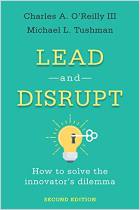
Recommendation
The COVID pandemic solidified the global rise of two dramatically different types of businesses. One is the giant tech firm that has succeeded, but is left vulnerable by its success. The other is the scrappy start-up hoping to supplant the giant. In this guide, professor Shameen Prashantham poses a way for both to prosper, together. He details how giants can partner with – and learn from – upstarts.
Summary
About the Author
Shameen Prashantham is professor of international business and strategy and associate dean at China Europe International Business School in Shanghai. He has written several other books including The Internationalization of Small Firms: A Strategic Entrepreneurship Perspective.
Learners who read this summary also read
Book
Book
Book
Article

















Comment on this summary or Comenzar discusión